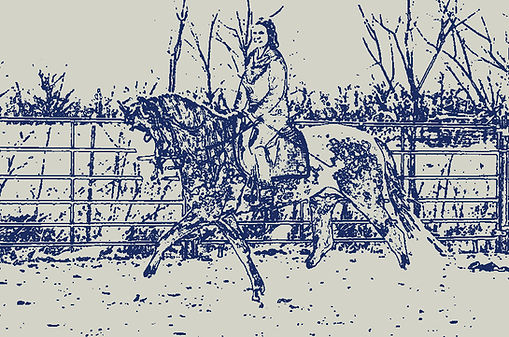
TRAINING PHILOSOPHY
Horsemanship is a very deep and complex art. There are centuries of experience and knowledge in horse training and yet, each horse and rider you train becomes the proof of solid theory and practice. Mastering this art TAKES TIME!
My goal is ALWAYS to work with the nature of the horse. I believe we must take the horse we have (both physically and mentally) and work diligently and methodically on improving the ability of the horse to perform to their best as a willing and happy partner. Some horses are super students and improve very quickly with certain aspects of training, others may take longer but may eventually outshine the fast learners. Just like human beings, horses always surprise you and you can never really know how far they might go in their training.
Likewise, each human riding student has unique attributes as well; I work very hard to NEVER limit my idea of what any student can achieve. It is truly amazing what methodical and insightful instruction can produce! The only thing needed is good old fashioned consistent effort and practice.
I live by the motto, Festina lente (make haste slowly). Currently, we are a product of modernity, are impatient and want results quickly. If I have learned anything through this process of classical horsemanship it is to BE CONSISTENT and PATIENT. If you “work the plan”, you will be surprised at how quickly you make progress. But you must respect the laws of nature, work on good dressage technique, pay attention and let go of your personal agendas.
Horse Training:
I ALWAYS start horse training with groundwork--longing and work-in-hand. If that is good, then we move to riding exercises. 4-track shoulder-in is taught from the beginning, first from the ground and then under saddle. The primary goal is to have the horse moving correctly “through the back” with enough impulsion and a good connection to the hand (on the bit) before you ever consider more collection or demanding work.
Training horses is not just teaching them exercises; mainly it is building their bodies to do the work you ask of them. You can’t take a couch potato and make them a ballet dancer overnight. You must remake the entire physique, and this TAKES TIME! Sometimes it also takes bodywork, changes in diet or shoeing. I take a very wholistic approach in this regard, but I also try not to complicate the training with so many moving parts, using only what works.


Riding Lessons:
Students are primarily instructed in the classical position and correct use of the aids. Usually, if the rider corrects their position or aid, then the horse will go correctly!!! Consequently, this is my main focus in lessons. I often use longe line exercises to help the student develop their strength, balance and technique.
The longe line is a wonderful way the student can focus on their position more easily without thinking about directing the horse so much. As often as possible I put students on my more advanced horses so that they can experience a more “finished” feeling.
I also believe in homework. There is a great deal to learn in horsemanship through reading and watching videos. I have a vast library of resource materials for students to supplement their education and lessons.
_e_JPG.jpg)